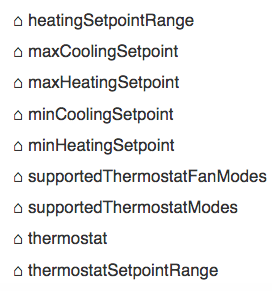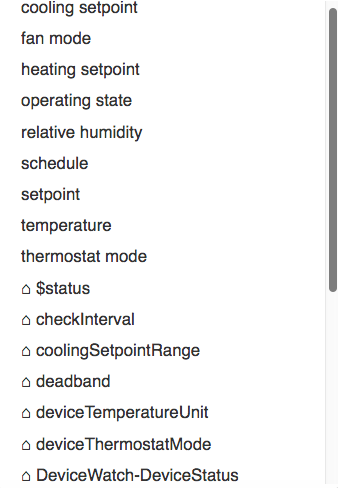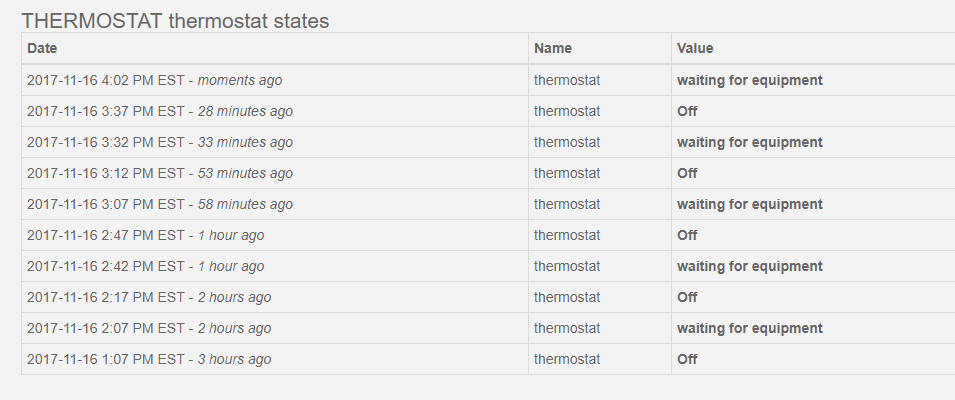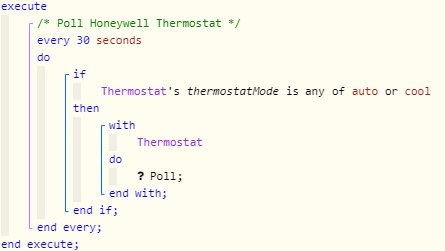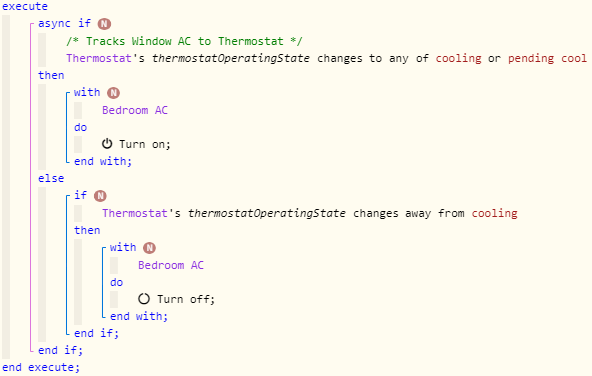Hi all,
I did a search for this particular model and didn’t see anything posted. Not a huge deal, but I was hoping I could make a piston that would detect when it was turned “on” or “off.” There is an off selection and on would be “automatic” “heat” and “cool.” I ran a quick piston that said if the thermostat changed to …“off” then send me a notification, etc…
I watched the piston under the live logging and didn’t see the device being picked up on WebCoRE…my guess is because of the how it is integrated with ST, there is a problem with how it communicates? Not sure.
Anyone have any luck with monitoring these conditions?
P.S. I can control issuing a command to it through WebCoRE (on, off, etc…) just can’t pick up states as indicated above…

